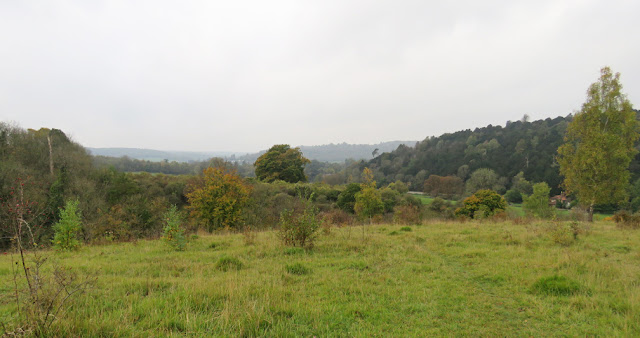The Headley Hawfinches

Yes, I know it's pants.... Seeing that there are so many Hawfinches zapping about all over the place, I thought that I would try and find some locally that were not just moving through, but using 'my' fair part of Surrey to feed and roost. The place of choice was the steep wooded valleys to be found on the western side of Headley Heath. This area has plenty of 'Hawfinch pedigree', where I have, in the past, seen this species shortly after dawn and considered it a possible roost site. Back in the 1970s and 1980s I would regularly visit the Bedgebury Pinetum Hawfinch roost in Kent, and remembered that they often came in early, sometimes a good hour and a half before sunset. So, armed with a thermos flask and plenty of hope, I took up my position (at 12.30hrs) on a grassy hill between the two westernmost valleys, with good visibility up to the tree-line on the neighbouring hills. The first hour was slow, save for the odd flock of Redwings that swept on through. T...






